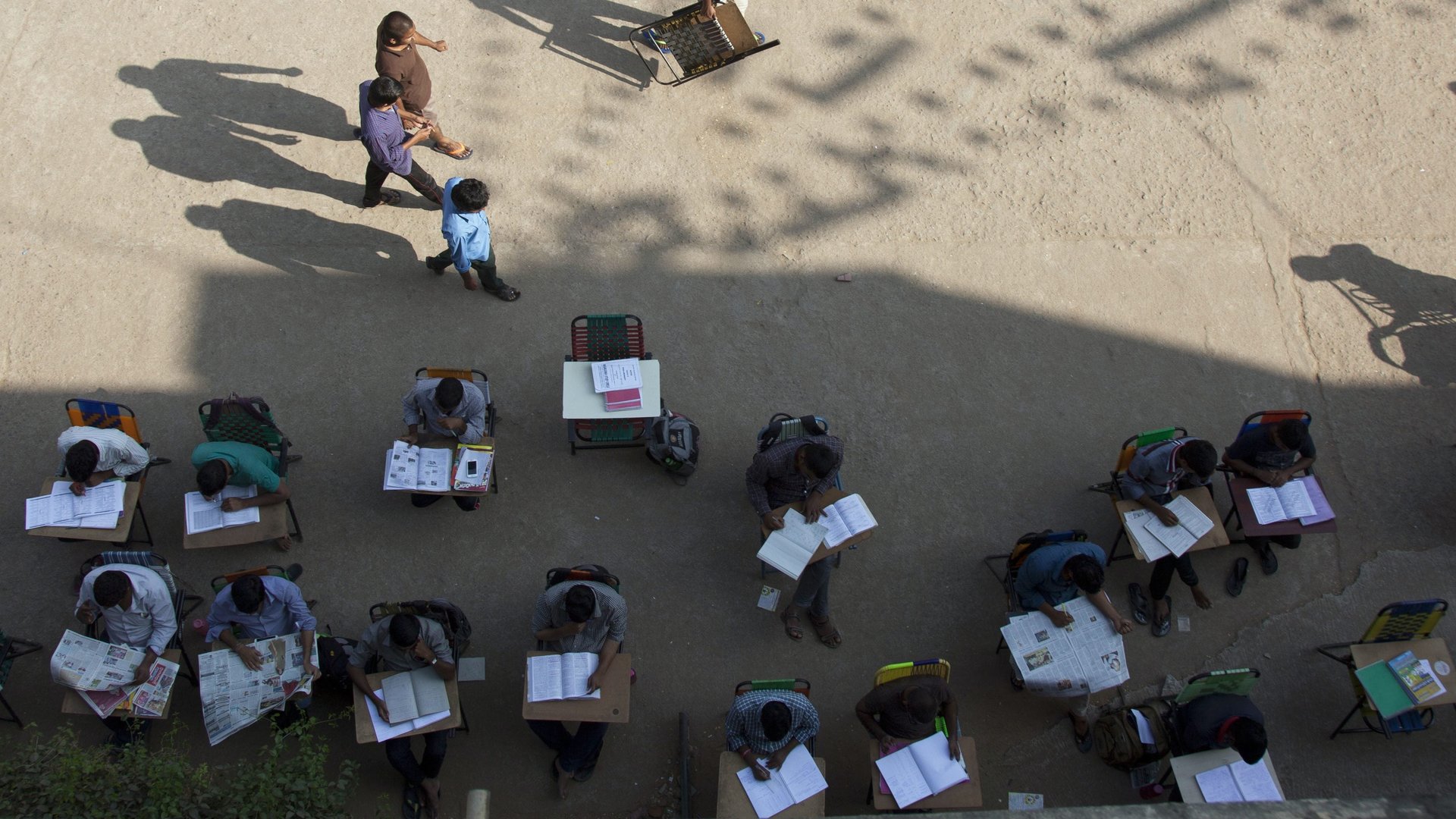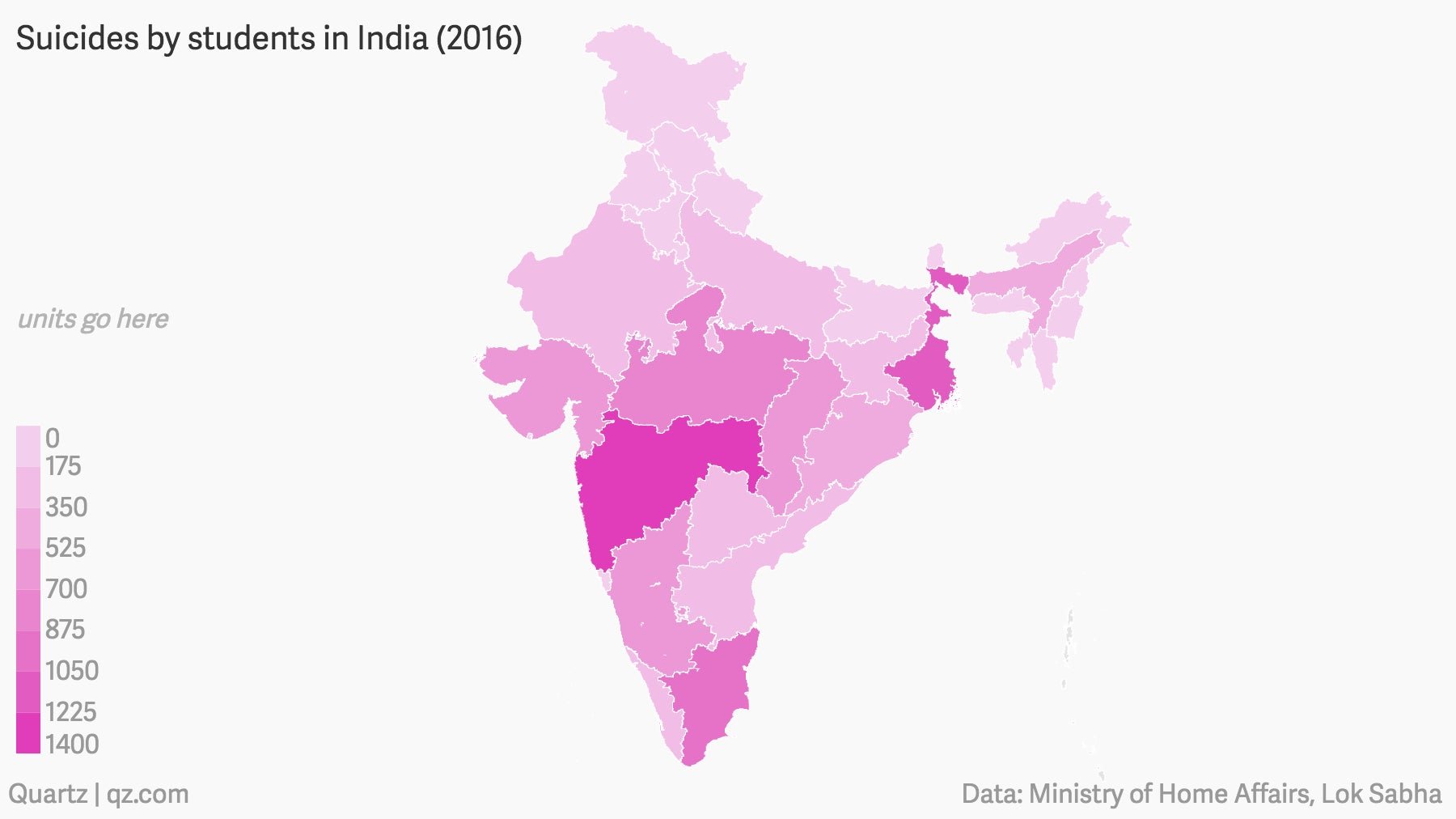In India, one student commits suicide every hour
The suicide crisis in India’s schools and colleges is worsening.


The suicide crisis in India’s schools and colleges is worsening.
In the three years since 2014, over 26,000 students killed themselves in India, the latest data sent to the ministry of home affairs by all Indian states and union territories shows. The number for 2016 alone stood at 9,474—that’s one suicide every 55 minutes.
Although there was no exact set of causes outlined, failure at examinations accounted for nearly a quarter of the cases. A total of 2,403 (in the year 2014), 2,646 (2015), and 2,413 (2016) suicides were committed due to this reason, Hansraj Gangaram Ahir, minister of state for home affairs, wrote in response to a question submitted to the Lok Sabha, the lower house of the Indian parliament, on Jan. 02.
At 1,350, Maharashtra logged the highest number for 2016, accounting for 14% of the total. West Bengal and Tamil Nadu followed with 1,147 and 981 student suicides respectively.

However, failure is not the only reason behind these incidents. Forced career choices, fear of failure, and the general stigma attached to mental distress often push students towards the extreme step, YourDost, an online counseling service, noted in a 2016 blog post.
The query in parliament, submitted by a member from Maharashtra, Kapil Moreshwar Patil, also sought to know if the rate of suicide among medical students is on the rise. In reply, minister Ahir said such information “is not maintained centrally.” But media reports do indicate that poor performance in examinations and caste discrimination at the workplace have driven many aspiring doctors over the edge.
Fixing the crisis
Currently, there are fewer than 5,000 psychiatrists and even fewer clinical psychologists—only 2,000—in a country of 1.3 billion. So there is a dire need to make more resources available to India’s student population.
The onus largely falls on each state, Ahir wrote. However, the central government “has approved implementation of the District Mental Health Programme in some of the districts of the country with added components of suicide prevention services, work place stress management, life skills training, and counseling in schools and colleges,” he added.
Educational institutions are chipping in, too. Nearly 115 colleges in Pune are opening wellness cells for distressed students. One of the country’s most prestigious engineering colleges, the Indian Institute of Technology-Kharagpur, has taken an unusual step: deliberately switching off power for an hour a day to encourage students to unplug and interact with each other.